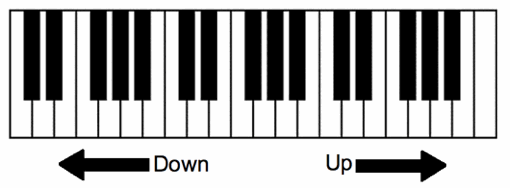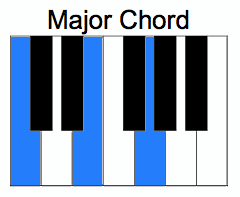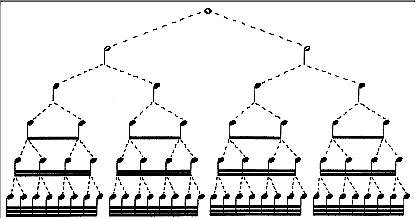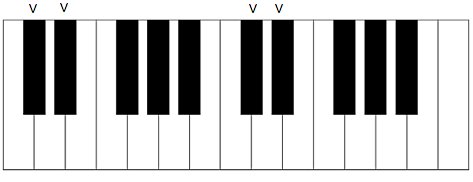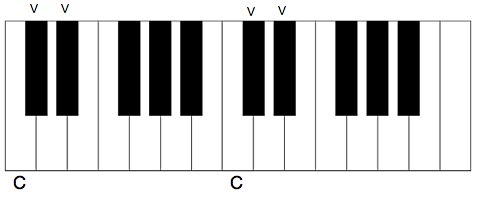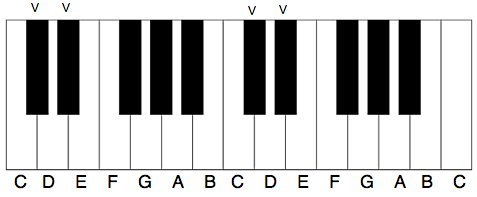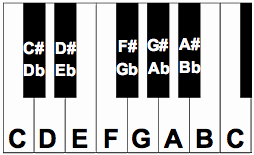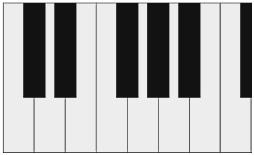So……You’ve always wanted to take piano lessons? You’ve dreamed of sitting with a group of friends, and out of nowhere you start playing your favorite songs.
Commence the ooohhh’s and aaahhh’s
Everyone is completely amazed…… They never knew you could play the piano.
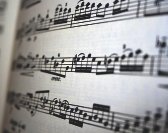
My name is Eric Rader, and I have been playing the piano for over 20 years. I am a self-taught piano player with years of experience teaching myself how to play the piano.
I have learned a lot about playing the piano over the years, and have done my best to include what I have learned in the piano lessons on this site. The purpose of this site is to help you reach your goal of playing the piano.
The fact that you came to this site shows that you are dedicated to learning the piano. But even with dedication, you are still going to come across some roadblocks.
That’s why I created these Free Lessons. So that you can master the piano in the quickest and easiest way possible.
Most people think that in order to play the piano they need years and years of lessons. That couldn’t be any further from the truth. With some basic music theory and some practice, you will learn to play the piano.
I personally believe that everyone can learn to play the piano! I also believe that you can do it right from your own home.
You don’t need to invest tons of time and money into private lessons.
All you need to do is follow my Free Online Piano Lessons and you will be on your way to playing the piano like you’ve always dreamed!
The Five Step Formula
For Mastering The Piano
If you are really wanting to play the piano there are a few basic steps that you need to follow. It’s just like most things in life, you have to walk before you can run.
It’s important that you master each of these steps to be successful at playing the piano. Each of them build one on top of the other.
During the learning process it’s important that you follow the steps below so that you don’t miss anything. My piano lessons follow my step-by-step method to help you master the piano.
So here it is. The Five Steps To Mastering Piano.
Step One:
Learn the Layout of the Piano Keyboard.
The very first thing that you need to do is understand the layout of the piano keys.
The keys on the piano are set up in a very specific manner that is actually pretty easy. It’s absolutely essential that you understand where the keys are, what makes a key higher or lower pitch, and the pattern of keys.
This is the first step for any piano player. You must take some time to learn the piano keys. And really not as hard as you might think.
It’s also helpful to know the type of piano you actually have. There are so many different types of pianos and keyboards out there that knowing the one you have can be difficult. So learning the layout of your particular piano keyboard is very important.
You can find out exactly which type you have here. You will also see how the layout for each of these keyboards is different, and how you can determine the pattern for the one you own.
Step Two:
Set Up a Practice Routine
Once you know the layout of the piano, and the type of piano you have, you need to set up a good practice schedule.
I know that practicing doesn’t sound like the most fun thing in the world, but it is an essential element of piano lessons.
This is probably the most overlooked piece of the puzzle for most people. They get very excited about learning to play that they practice for hours. Then after about a week or so their excitement fizzles off.
After the first wave of excitement is over it’s hard to get yourself motivated to get back at it.
So make sure that you set up a solid schedule that you know you can keep to. If you only have twenty minutes per day to practice, that’s fine.
Force yourself to make a set schedule you can stay dedicated to at least five days a week.
Practicing for twenty minutes per day for a year is much better than practicing 3 hours per day for a week.
To get the most out of each practice session make sure you follow these tips.
Step Three:
Master Scales
Scales are really the foundation of piano lessons. Most of the musical theory that you learn in the future will be based on scales.
That’s why I have included them in these five tips. You need to take the time to learn some of the most common scales so you can start learning to play chords and improvisation.
The first type of scale you need to focus on in you piano lessons journey is the major scale.
This is the most common scale and will be used in every style of music.
Learning the major scale will make a lot of the music theory you learn in the future make a lot more sense.
You will also be able to imporvise in songs when you learn scales. Each song is made up of a certain scale, once you learn that scale you can play nearly every note and it will sound good.
So learning scales will allow you to add more of your own personality into a song by letting you improvise on your own.
Step Four:
Master Chords
Now we come to the bread and butter of playing the piano. If you have been playing piano for any amount of time I’m sure you have heard of chords.
Chords are the foundation of any song. They allow you play a song without actually having to read any sheet music. It’s like you are able to play a shortcut version of any song you ever wanted.
This is probably the area in your piano lessons which you need to focus the most of your time. If you can master chords, then you will be able to play nearly anything.
But where do you start?
The major chord is the most common chord on the piano. Nearly every song on the planet has at least one major chord in it.
Once you learn this chord you can start focusing on some of the other common chords.
These chords will get you playing the piano quickly because they are used in most popular music.
Learn to master chords and you will learn to master the piano.
Step Five:
Train your Ear
Training your ear is a crucial skill that any musician needs. After years of playing the piano I still take time to practice ear training to help myself get a better ear for music.
Ear training simply means to intently listen to intervals, chords, and other parts of music so you can later recognize those elements while playing.
A lot of people think that they can’t play by ear because they don’t have an ear for music. Everyone can become better at ear training.
You need to expose yourself to a lot of music and listen very closley to the different parts of a song to get a better ear.
Rather then just listening for pleasure, you need to focus on chord changes and interval changes. When you first start you’ll notice this being pretty hard. But as you practice you will find that it gets easier and easier.
Make sure you take time to train you ear to hear certain parts of music. As time goes on you will see that recognizing these parts of a song will become second nature to you.
Where Do I Go From Here?
Now that you know the five step formula for mastering the piano, you need to start implementing these tips into your piano lessons.
Make sure you take full advantage of all of the lessons on this site. Each lesson is set up for easy navigation from one lesson to the next.
Even if you are a beginner, intermediate, or advanced, you will find important information to help you further your playing skills.
I’m not saying that you will magically be able to play overnight, but with determination and practice, you will be able to play like you never thought you could.
Keep Playing, Keep Practicing, Keep Making Music!
Wondering Where To Start?
My Top 5 Piano Lessons
Lessons #1 – Layout of Piano Keys
This lesson explains the layout of the piano. It gives a detailed description of the notes and where they are located on the piano.

Lessons #2 – Learn The White Piano Notes
Learn the names and location of all the white notes on the piano. Shows how to identify all the notes on the piano in just a few minutes.

Lessons #3 – Learn The Black Piano Notes
You will learn the names of all the black keys on the piano. You will find a quick and easy trick to quickly name these notes!

Lessons #4 – Piano Fingering
This lesson shows the correct fingering when playing the piano. Shows the numbering of each finger. This lesson keeps your hands spread out so they are not jammed together.

Lessons #5 – Major Scale
Here is one of the most important parts of any piano lesson. Once you learn the major scale, you will see how people can play any song in any key!
I hope that you enjoy my site and that my lessons are helpful to you.
Teaching the piano is my passion and I want to see you succeed. I strive to provide the best piano lessons possible to help give you the best results possible.
So, please enjoy the lessons and enjoy your experience of learning the piano.

